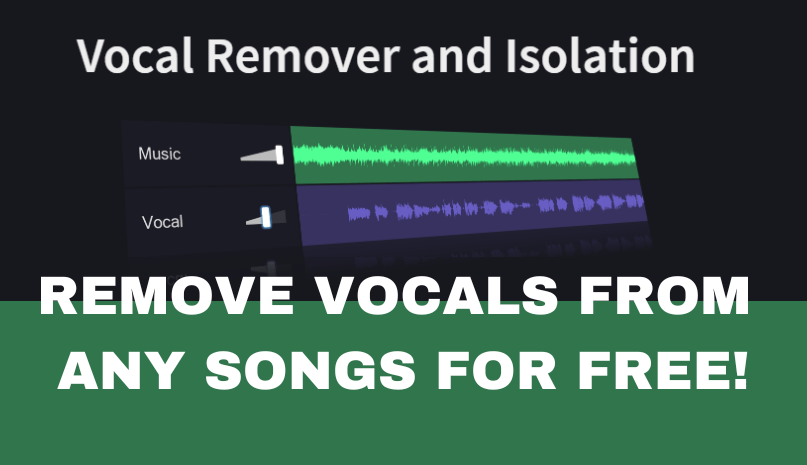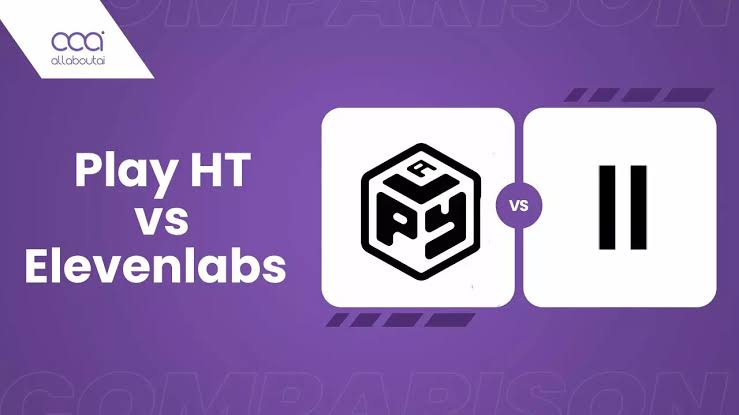Understanding AI Vocal Removers: How They Work and Where to Find Them for Free
A beginner's guide to using AI to isolate vocals or instrumentals from any song

What is an AI Vocal Remover?
An AI vocal remover is a software tool that uses machine learning algorithms to separate vocals from the instrumental background in a song or audio track. This process is also known as audio source separation. With recent advancements in artificial intelligence, vocal removers are getting increasingly accurate, allowing musicians and content creators to extract high-quality stems (individual parts of a song, such as vocals, drums, or bass) from mixed audio.
Traditionally, vocal removal was a difficult task requiring expensive studio equipment and expert knowledge in mixing and mastering. Nowadays, AI vocal removers have democratized this process, making it accessible to anyone with a computer and an internet connection.
How Does an AI Vocal Remover Work?
AI vocal removers use deep learning models, primarily trained on large datasets of music, to identify and separate different components of a song. Here's a simplified explanation of how they work:
-
Training the Model: The AI is trained on thousands of songs where the separate stems (vocals, drums, bass, etc.) are already available. The model learns to recognize the unique spectral and rhythmic patterns of each component.
-
Source Separation: When you upload a mixed track, the AI analyzes the audio and attempts to separate the vocals from the instrumental by comparing the frequencies and patterns to what it learned during training. The model essentially "removes" the instrumental background by creating a mask that only allows the vocal frequencies to pass through.
-
Output: The result is a new version of the audio file where the vocals and instrumental are isolated into separate tracks. The most basic model will give you two outputs: one with the vocals and another with the instrumental minus the vocals (though this might not be perfect, especially if the vocals and instruments overlap significantly in the frequency spectrum).
Key Technical Concepts:
- Spectrogram: This is a visual representation of the frequencies in audio over time. The AI uses spectrograms to identify which parts of the audio belong to vocals or instruments.
- Masking: This is the process of applying a filter to an audio signal to suppress or emphasize certain frequencies. In vocal removal, a mask is created to suppress vocals or instrumentals based on their spectral characteristics.
- Neural Networks: These are the types of machine learning models used to learn and predict audio patterns. Models like U-Net and Wave-U-Net are popular for audio source separation tasks.
Why Use an AI Vocal Remover?
- Sampling and Remixes: DJs and producers use vocal removers to isolate acapella (vocals) or instrumental versions of songs for remixes, mashups, or sampling in new productions.
- Karaoke Versions: Create your own karaoke tracks by removing vocals from a song.
- Transcription and Analysis: Musicians and researchers can analyze the isolated vocals or instrumentals for transcription or study.
- Content Creation: Video creators can remove background music from speech segments or add their own music to a vocal track.
Free Online Tools and Software
Here is a list of some free AI vocal remover tools you can use:
-
Acapella Extractor: A simple web tool that uses AI to separate vocals from instrumentals. You can upload an audio file and get the separated output instantly.
-
Moises: A more comprehensive online and mobile app that allows you to separate vocals, drums, bass, and more from a mixed track. It has a free tier with limited features.
-
PhonicMind: One of the first AI vocal remover tools, it provides high-quality stems but with a more limited free tier.
-
LALAL.AI: This tool offers excellent separation quality and has a free version with limited use.
-
Spleeter: A machine learning library by Deezer that splits audio into separate stems. It requires some technical expertise to install and use locally.
-
Vocal Remover.org: A straightforward website for vocal removal with additional tools like pitch changing and BPM detection.
Step-by-Step Guide to Extracting Vocals Using an Online Tool
Here’s how you can typically use an AI vocal remover:
-
Upload Your Audio: Go to the website of your chosen tool and upload an MP3 or WAV file (some tools also support video files).
-
Processing: The tool will process the audio, which can take a few seconds to a few minutes depending on the complexity of the song and the tool's backend.
-
Download Your Stems: Once processed, you will get the separated vocal and instrumental tracks available for download.
-
Edit (Optional): You can further clean up the separated vocals or instrumentals using audio editing software like Audacity, GarageBand, or Adobe Audition.
Example (Using Spleeter in Python):
To give you a taste of the technical side of things, if you are familiar with Python, you can use spleeter on your own machine to separate audio stems. Here’s how:
- Install Spleeter:
pip install spleeter
- Run Spleeter: You can use one of the pre-trained models (e.g., 2-stem, 4-stem, or 5-stem separation). For vocals and accompaniment (2-stem):
spleeter separate -p spleeter:2stems -o output_dir path/to/your_audio_file.mp3
This will output your_audio_file/vocals.wav and your_audio_file/accompaniment.wav in the output_dir directory.
# Example Python script (optional advanced step): from spleeter.separator import Separator # Initialize the separator with the 2-stem model. separator = Separator('spleeter:2stems') # Separate the audio into vocal and accompaniment. separator.separate_to_file('your_audio_file.mp3', 'output_dir')
Remember that running spleeter locally requires a decent amount of computational power, especially for longer or high-resolution audio files. For most creators, the web-based tools will suffice.
Tips and Tricks
- High-Quality Source: The cleaner and higher quality the original audio file, the better the separation results will be. Avoid using low-bitrate MP3s or compressed audio.
- Fine-Tuning: For a truly polished result, you may need to tweak the separated stems with an audio editor to remove any lingering artifacts.
- Experimentation: Try different AI tools, as each might perform better with specific genres or types of audio.
Conclusion
AI vocal removers have revolutionized how we approach audio editing, making it possible to extract vocals or instrumentals with ease and use them creatively in various projects. Whether you are a musician, content creator, or hobbyist, these tools can enhance your work and open up new possibilities. Best of all, many are available for free! Start experimenting with the tools listed above and see how they can help you separate vocals and instrumentals for your next big project.
This blog post provided a beginner-friendly explanation of AI vocal removers, including their technical workings, use cases, and links to free tools. Feel free to reach out with questions, and stay tuned for more AI-powered creative tools in the future!
Comments (0)
Related Articles

Transforming Blogs into Audio with AI Tools: A Guide to ElevenLabs and Play.ht
Learn how to turn your blog posts into natural-sounding audio using AI tools like ElevenLabs and Play.ht. This guide covers setup, voice selection, and tips for enhancing your audio content.

How to Use AI Tools for Novel Writing: Worldbuilding, Characters, and Plots
AI tools can significantly enhance the process of worldbuilding, character development, and plot outlining in novel writing. This guide provides a step-by-step approach to leveraging AI effectively while maintaining your unique creative voice.

Creating Stunning Business Presentations in Under 10 Minutes with AI Tools like Tome or Gamma
Learn how AI tools like Tome and Gamma can help you create professional presentations in just 10 minutes, with minimal effort.